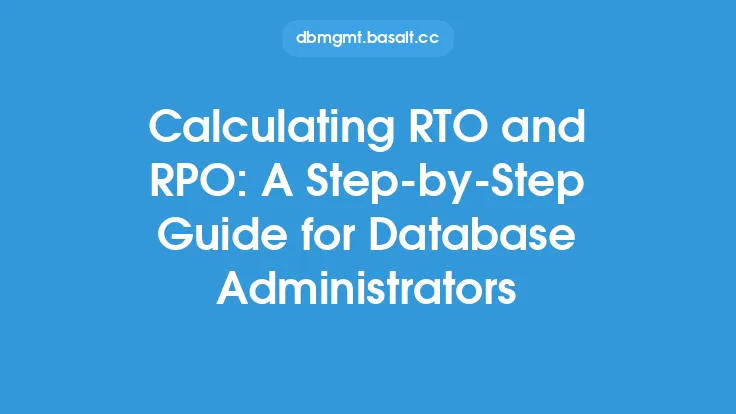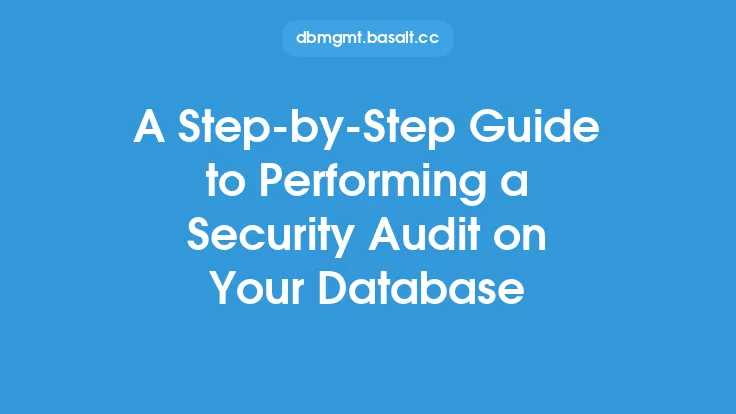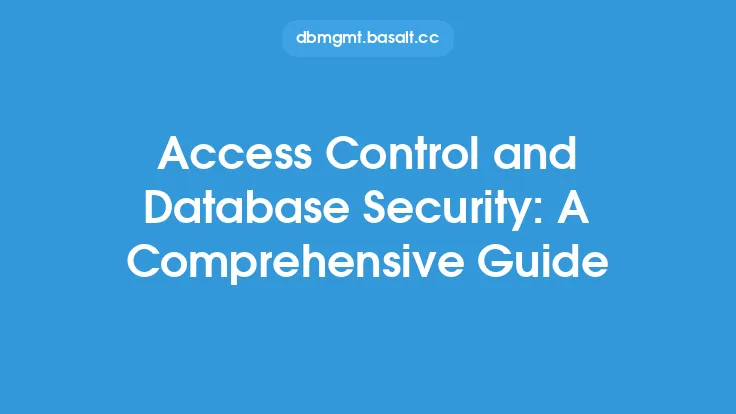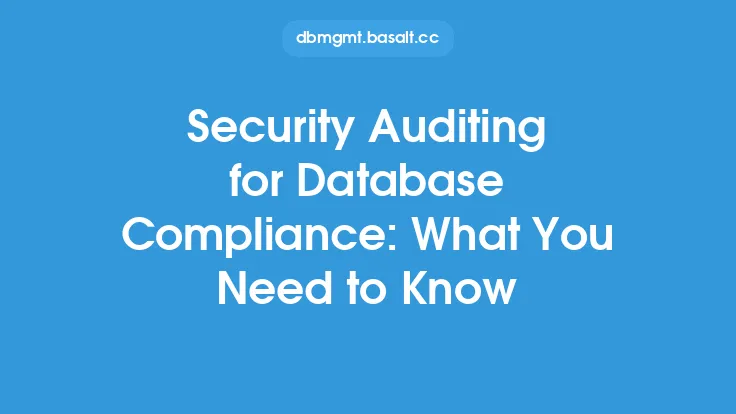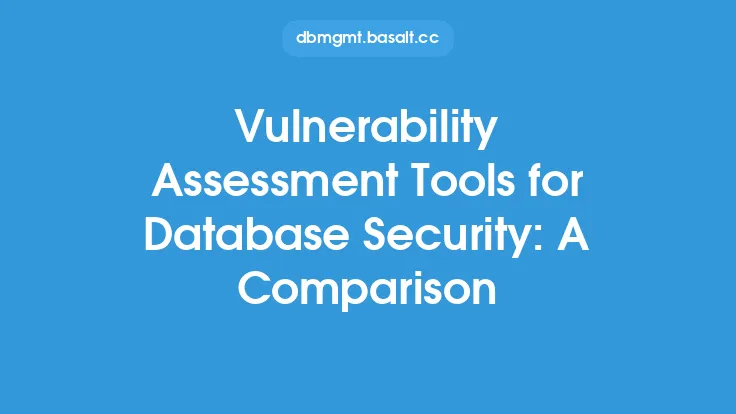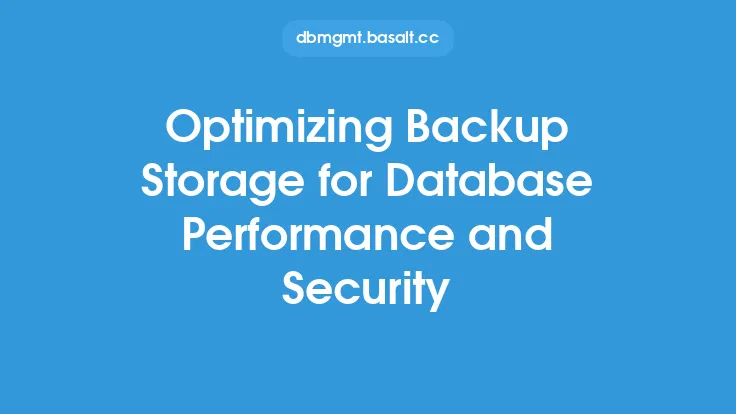Database testing is a critical aspect of ensuring the security and compliance of an organization's data. As databases store sensitive information, it is essential to test them thoroughly to identify vulnerabilities and ensure that they meet the required security and compliance standards. In this article, we will delve into the world of database testing for security and compliance, exploring the various techniques, tools, and best practices that can help organizations protect their data.
Introduction to Database Security Testing
Database security testing is the process of evaluating the security of a database to identify vulnerabilities and weaknesses that could be exploited by attackers. This type of testing involves simulating various types of attacks, such as SQL injection and cross-site scripting (XSS), to test the database's defenses. The goal of database security testing is to identify potential security risks and provide recommendations for remediation. Database security testing can be performed manually or using automated tools, and it is an essential step in ensuring the security and compliance of an organization's data.
Compliance Testing for Databases
Compliance testing for databases involves evaluating the database's adherence to relevant laws, regulations, and industry standards. This type of testing ensures that the database is configured and managed in a way that meets the required compliance standards, such as HIPAA, PCI-DSS, and GDPR. Compliance testing for databases typically involves reviewing the database's configuration, access controls, and data encryption to ensure that they meet the required standards. This type of testing is critical for organizations that handle sensitive data, such as financial information, personal identifiable information (PII), or protected health information (PHI).
Types of Database Testing for Security and Compliance
There are several types of database testing that can be performed to ensure security and compliance. These include:
- Vulnerability testing: This type of testing involves identifying potential vulnerabilities in the database, such as outdated software or misconfigured access controls.
- Penetration testing: This type of testing involves simulating a real-world attack on the database to test its defenses.
- Compliance testing: This type of testing involves evaluating the database's adherence to relevant laws, regulations, and industry standards.
- Security auditing: This type of testing involves reviewing the database's configuration, access controls, and data encryption to ensure that they meet the required security standards.
- Risk assessment: This type of testing involves identifying potential security risks and providing recommendations for remediation.
Database Testing Tools and Technologies
There are several database testing tools and technologies that can be used to perform security and compliance testing. These include:
- Automated testing tools, such as SQLMap and Burp Suite, which can be used to simulate attacks and identify vulnerabilities.
- Compliance testing tools, such as IBM InfoSphere Optim and Oracle Enterprise Manager, which can be used to evaluate the database's adherence to relevant laws and regulations.
- Security auditing tools, such as Nessus and Qualys, which can be used to review the database's configuration, access controls, and data encryption.
- Risk assessment tools, such as RSA Archer and Lockpath, which can be used to identify potential security risks and provide recommendations for remediation.
Best Practices for Database Testing for Security and Compliance
There are several best practices that can be followed to ensure effective database testing for security and compliance. These include:
- Performing regular security testing and compliance testing to identify vulnerabilities and ensure adherence to relevant laws and regulations.
- Using automated testing tools to simulate attacks and identify vulnerabilities.
- Reviewing the database's configuration, access controls, and data encryption to ensure that they meet the required security standards.
- Providing training and awareness programs for database administrators and developers to ensure that they understand the importance of security and compliance.
- Continuously monitoring the database for potential security risks and providing recommendations for remediation.
Challenges and Limitations of Database Testing for Security and Compliance
There are several challenges and limitations of database testing for security and compliance. These include:
- The complexity of modern databases, which can make it difficult to identify vulnerabilities and ensure compliance.
- The lack of skilled personnel, which can make it difficult to perform effective database testing.
- The cost of database testing tools and technologies, which can be prohibitively expensive for small and medium-sized organizations.
- The time and effort required to perform database testing, which can be significant.
- The potential for false positives and false negatives, which can make it difficult to identify real security risks.
Future of Database Testing for Security and Compliance
The future of database testing for security and compliance is likely to involve the use of artificial intelligence (AI) and machine learning (ML) to identify vulnerabilities and ensure compliance. AI and ML can be used to analyze large amounts of data and identify patterns and anomalies that may indicate a security risk. Additionally, the use of cloud-based database testing tools and technologies is likely to become more prevalent, as they offer greater flexibility and scalability than traditional on-premise solutions. Furthermore, the increasing use of DevOps and agile development methodologies is likely to require more frequent and automated database testing to ensure security and compliance.
Conclusion
Database testing for security and compliance is a critical aspect of ensuring the security and integrity of an organization's data. By performing regular security testing and compliance testing, organizations can identify vulnerabilities and ensure adherence to relevant laws and regulations. The use of automated testing tools and technologies can help to streamline the testing process and reduce the risk of human error. Additionally, the implementation of best practices, such as providing training and awareness programs for database administrators and developers, can help to ensure that databases are configured and managed in a way that meets the required security and compliance standards. By prioritizing database testing for security and compliance, organizations can protect their data and reduce the risk of security breaches and non-compliance.
